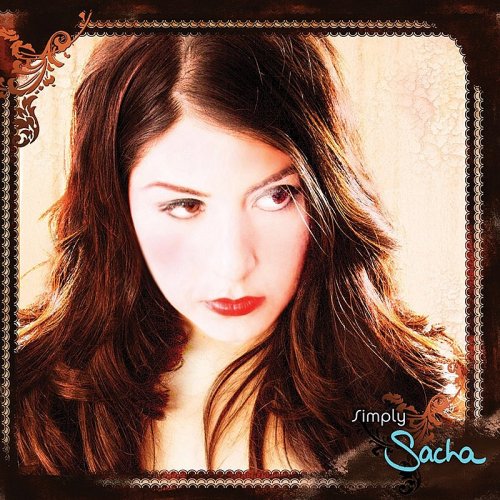Sophie Yates - Tombeau: German Harpsichord Music of the 17th Century (1998)

Artist: Sophie Yates
Title: Tombeau: German Harpsichord Music of the 17th Century
Year Of Release: 1998
Label: Chandos Records
Genre: Classical
Quality: FLAC (image+.cue,log,scans)
Total Time: 74:45
Total Size: 435 Mb
WebSite: Album Preview
Tracklist: Title: Tombeau: German Harpsichord Music of the 17th Century
Year Of Release: 1998
Label: Chandos Records
Genre: Classical
Quality: FLAC (image+.cue,log,scans)
Total Time: 74:45
Total Size: 435 Mb
WebSite: Album Preview
Johann Jacob Froberger (1616–1667)
[1] Toccata II in D minor 3:09
[2] Meditation from Suite XX 3:47
Johann Kaspar Kerll (1627–1693)
[3] Passacaglia in D minor 5:37
Johann Jacob Froberger
[4]-[7] Suite XVIII in G minor 8:36
[8] Toccata V in E minor 2:46
Johann Pachelbel (1653–1706)
[9] Aria sexta 7:47
Johann Jacob Froberger
[10]-[13] Suite XXX in A minor 7:50
Georg Böhm (1661–1733)
[14]-[17] Suite VIII in F minor 7:51
Johann Jacob Froberger
[18]-[21] Suite XIX in C minor 8:49
Georg Muffat (1653–1704)
[22] Passacaglia in G minor 11:23
Johann Jacob Froberger
[23] Tombeau de Monsieur Blancheroche 6:11
Performers:
Sophie Yates harpsichord
A fascinating collection of German harpsichord music from one of the instruments finest exponents, Sophie Yates.
The German composer Johann Jacob Froberger is the central figure in this collection and he was probably the most significant influence in the development of a distinctive, German style of writing for keyboard instruments. He wrote some twenty-five toccatas of which the two on this album are of very different character; the earlier one is very contrapuntal in style and makes use of a chromatic theme, whilst the other is written in a feer, more improvisatory style, and is harmonically very daring. Sophie Yates writes in her sleeve notes that she wished to include some of the darker more sensual suites, of which the C minor Suite is one of the most striking. Froberger is a colourful composer, and these varied suites, consisting of the usual dance numbers of the day, are most enjoyable.
Johann Kaspar Kerll was similarly an innovator and is represented on this album by an impressive Passacaglia which places great demands on the player, Johann Pachelbel is probably most famous as a composer of sacred works and, of course, the ubiquitous Canon in D. Of his instrumental music, the Hexachordum Apollinis is his most well-known work, which comprises a set of six arias with variations, of which the last one is recorded here. George Böhm is best remembered for his influence on other composers, particularly J S BAch. The Suite on this album is a good example of Böhm’s style, which mixes both French and Italian influences. George Muffat’s Passacaglia dates from 1690 and embodies both French and Italian styles, although the freedom and inventiveness with which he treats his material is distinctly Italianate.
The German composer Johann Jacob Froberger is the central figure in this collection and he was probably the most significant influence in the development of a distinctive, German style of writing for keyboard instruments. He wrote some twenty-five toccatas of which the two on this album are of very different character; the earlier one is very contrapuntal in style and makes use of a chromatic theme, whilst the other is written in a feer, more improvisatory style, and is harmonically very daring. Sophie Yates writes in her sleeve notes that she wished to include some of the darker more sensual suites, of which the C minor Suite is one of the most striking. Froberger is a colourful composer, and these varied suites, consisting of the usual dance numbers of the day, are most enjoyable.
Johann Kaspar Kerll was similarly an innovator and is represented on this album by an impressive Passacaglia which places great demands on the player, Johann Pachelbel is probably most famous as a composer of sacred works and, of course, the ubiquitous Canon in D. Of his instrumental music, the Hexachordum Apollinis is his most well-known work, which comprises a set of six arias with variations, of which the last one is recorded here. George Böhm is best remembered for his influence on other composers, particularly J S BAch. The Suite on this album is a good example of Böhm’s style, which mixes both French and Italian influences. George Muffat’s Passacaglia dates from 1690 and embodies both French and Italian styles, although the freedom and inventiveness with which he treats his material is distinctly Italianate.
![LRK Trio, Elizaveta Korneyeva and Euphoria Orchestra - LRK Orchestra (2025) [Hi-Res] LRK Trio, Elizaveta Korneyeva and Euphoria Orchestra - LRK Orchestra (2025) [Hi-Res]](https://www.dibpic.com/uploads/posts/2025-12/1766210674_qm8oj75twl1x5_600.jpg)


![Stephen McCraven - Wooley the Newt (2025) [Hi-Res] Stephen McCraven - Wooley the Newt (2025) [Hi-Res]](https://www.dibpic.com/uploads/posts/2025-12/1765906334_cover.jpg)

![Tom Cohen - Embraceable Brazil (2025) [Hi-Res] Tom Cohen - Embraceable Brazil (2025) [Hi-Res]](https://img.israbox.com/img/2025-12/18/vgt0kbsml69jbixcu67jkruae.jpg)


![Demo Rumudo - Second Nature (2025) [Hi-Res] Demo Rumudo - Second Nature (2025) [Hi-Res]](https://www.dibpic.com/uploads/posts/2025-12/1765883076_cover.jpg)